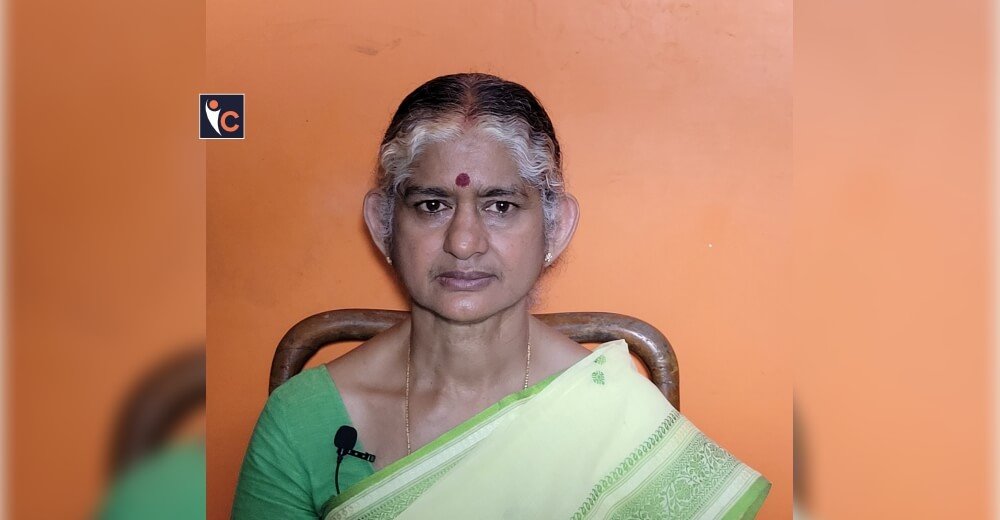The clinical decision making process is affected by a series of sequential steps; lab testing being one of the most vital ones. In spite of this, providers are struggling to effectively receive and manage lab test results, with a significant lag between patient appointments and results.
During her time in a Philadelphia HIV clinic, Brianna Wronko saw a troubling case involving a pregnant mother diagnosed with HIV. Due to the delay in receiving the patient’s results, the patient remained on her medication, which was detrimental to both her and the fetus. She could not be reached by phone or mail, therefore making a change to her medication impossible until she walked into the clinic several months later. Without the necessary immediate action in response to her test results, the mother and child were left with the possibility of severe physical complications and a high cost of future care.
This is an extreme case, but such setbacks can be avoided with immediate testing and results. That is when Wronko started working on a product with a thoughtful perception of the big picture. She focused on the manufacturing, ease of use, marketability, and adoption in the current healthcare infrastructure, and then scaling the big picture down until she developed the current design, and platform to support those elements. That is when Group K Diagnostics, Inc. was born. Today the company is working seamlessly under Wronko’s guidance. She serves as the CEO of Group K.
Group K manufactures a modular, point-of-care, paper microfluidic diagnostic device with a mobile app that reads the device’s outputs, and quantifies results for physicians to make informed diagnoses within 20 minutes of seeing a patient.
The Journey of an Idealistic Organization
Group K Diagnostics has developed from a research prototype to a reality. The company foresees bringing to market this transformative technology as early as 2019. Upon the opening of a larger wet lab space, separate manufacturing space, expanded administrative offices, and the completion of initial clinical trial testing by year end 2018, the company will begin scaling into the healthcare marketplace. Comprised of a seasoned team of engineers, operators and business executives matched with world class advisors, Group K Diagnostics continues to change the path within the diagnostics industry.
The Young & Dynamic Leader
Wronko brings seven years of research experience in microfluidics and immunology to design and manufacture Group K’s paper microfluidic devices. She has a BSE in Bioengineering from the University of Pennsylvania.
Her experience with FDA and governmental approval processes from her time at Five Eleven Pharma and GSK has been instrumental for streamlining the pre-clinical, clinical, and FDA processes. Now, with a team of research engineers and technicians for device production and development, Wronko focuses on overall technological development and company vision.
Discrete Services & Products
Group K Diagnostics’ technology has two components, hardware and software:
The Hardware Component- the paper microfluidic device is designed to support over 60 tests and counting. The design of the devices’ channels, sample deposition region, and detection regions—as well as the instructions for use—remain constant, while the reagents used in the detection regions change to support different diagnostic tests. This allows healthcare providers to learn one protocol for testing instead of having to remember several different ones. The device also features a QR code to note expiration date, test identity, and lot number; a barcode to associate the test with a patient and transmit results to the electronic health record; and a color panel for the computer vision feature of Group K’s mobile app to reference and normalize color based on ambient lighting.
The Software Component- is comprised of several portals targeting various stakeholders in the healthcare system. The mobile app is used to walk the provider through the steps associated with using the device, collect results, inform diagnoses, and record patient data in the Electronic Health System. The flow of the app includes a login page and patient confirmation followed by image acquisition. A picture of the device’s detection regions is acquired, and through computer vision, image processing, and AI- analysis it produces produce quantified measures that inform diagnoses and are recorded in the EHR. Through the company’s patient app or patient portal login, patients can access their results and transfer them from hospital to hospital. Finally, combining everything together, there is an additional portal available to hospital administrators. Group K Diagnostics’ hospital portal also has epidemic tracking and hospital preparedness applications with anonymized patient data. By analyzing the type of tests being ordered, and the corresponding results, hospital systems can identify epidemics and better prepare with optimized inventory purchasing and staffing. With big data analysis, Group K Diagnostics can track the severity and geographic location of disease and predict where disease will spread. This information can be used to increase hospital’s preparedness for epidemics and general disease.
For example, Group K’s Liver Function Test (LFT) results in a measurement for ALT (amongst five other metabolites) in terms of units per liter which is used to evaluate one aspect of liver function. The web app would display anonymized data for providers, for example to see if a Liver Clinic was effectively managing medication switches for liver disease patients. The mobile app has patient and provider portals. With 36% of abnormal results never communicated to patients, the app eliminates this miscommunication and allows the patient to have their full diagnostic test history stored in their app. The provider portal organizes the diagnostic tests, and immediately transfers the results to the EHR so information is never lost.
Group K’s technology can be used in specialty and primary care centers. The clinical use of the company’s technology does not impose any additional training on nurses and physicians, so these personnel can easily adopt its technology into their workflow, while eliminating the existing time they spend at the end of their day calling patients or release results to their patients.
Vision & Mission of Group K Diagnostics
Group K Diagnostics offers a clever, simple solution for the slow, inefficient, and costly laboratory testing that sets today’s standard for 77% of all patient diagnoses. Iterating about Microfluidics in the diagnosis laboratory Wronko says, “We admit that applying microfluidics to the laboratory testing problem is not novel. Research labs have designed and implemented prototypes but fail to make cost effective manufacturing processes and complimentary software.” Group K intends to revolutionize diagnostic testing by having solved the age old problem of adapting microfluidics to laboratory diagnostics by a streamlined, patient and physician suitable diagnostic.
Capturing Markets with Innovation
Having started out in a strong research vertical, Group K Diagnostics is blazing a new path forward, in point of care diagnostic testing. The immediate markets the company is addressing, include LFTs ($972 million), comprehensive metabolic panels (CMPs, $5.4 billion), and complete blood counts (CBCs, $4.1 billion). The most important facet of Group K’s technology, driving its value, is the time it takes for diagnostic testing.
On average, existing laboratory testing results take 10 days to return to a provider, despite 77% of diagnoses are only completed with lab results. This delay loses patients, transforms acute cases to chronic cases, and increases patient costs. Additionally, this testing procedure costs patients $15-100 per test unless they follow strict insurance guidelines. The current standard for diagnostic testing and laboratory testing takes too long, during which patients are lost to follow-up, acute cases, can become chronic, thus increasing patient costs.
Relative to the market, Group K Diagnostics is unique in that its product is low cost, requires less than 20 minutes for results, does not require training or refrigeration, can be completed in office, and supports multiple tests. The company states, “Our biggest competitor- Abbot’s iStat- requires training and refrigeration and cannot be completed in office.”
Matchless Solution to Point-Of-Care Diagnostic Testing
Group K’s technology reduces the time to results from 10 days to 20 minutes for $8-12. The diagnostic test can be completed within a patient appointment, leading to patient retention, patient diagnosis and immediate clinical action, as well as reduced costs for patients. The technology improves patient care by lowering the cost of laboratory diagnostic testing, supporting immediate clinical action, giving patients the rights to their results, and better preparing hospitals to respond to epidemics or clinic wide issues. The cost of the device falls below that for laboratory testing reimbursement today, which makes Group K’s platform more accessible to low resource clinics and patients.
The firm’s modular, microfluidic device, and mobile app with computer vision and AI revolutionize diagnostic testing by providing quantified results within minutes. This allows physicians to take immediate clinical action. This technological platform will support over 60 tests in the future with liver function, comprehensive metabolic panels, and complete blood counts as its initial tests. The fast response time of the technology provides results within a single appointment, allowing immediate clinical action to be taken, so that time sensitive and communicable cases are better treated as well as controlled.
The distinct patient portal gives patients access to their result records, so all abnormal results are immediately reported, as well as overseen and given by a provider in the moment. Improving hospital preparedness for epidemics allows patient experience to improve, protecting patients against infectious diseases or outbreaks.
Another intriguing feature of the product is that it is easy to use and does not require additional training. It also doesn’t require refrigeration, and can be completed in office. This gives patients’ direct access to their results, eliminating any miscommunications that might occur in the case of 36% of abnormal results that currently go unreported. All these elements have led to seamless integration of Group K Diagnostics’ product in to the physician, and nurse workflow.
Instigating a Groundbreaking Change in Healthcare
The numerous advantages of the product will ease payer demands, and allow the device to be used by physicians in specialty or primary clinics, without access to on-site labs, and needing urgent & frequent results. In addition to increasing accessibility to laboratory testing to low resource regions and patients, Group K’s product will improve time to diagnosis for all users. The need for immediate results and clinical action is crucial for improving treatment and preventing acute cases from becoming chronic.
Another key feature of its software is the provider and patient portals. It will allow patients to receive and keep records of their results ensures that abnormal results are communicated and also transferred easily when a patient transfers providers. Group K Diagnostics’ platform prevents this miscommunication, and helps protect patients and providers. Another revolutionary application of the company’s software component is epidemic tracking using anonymized patient data.
The medical diagnostics industry continues to change rapidly and with its revolutionary application of point-of-care diagnostics, Group K Diagnostics believe that it will continue to stay ahead of the trends by continuously making advancements within its technologies.










